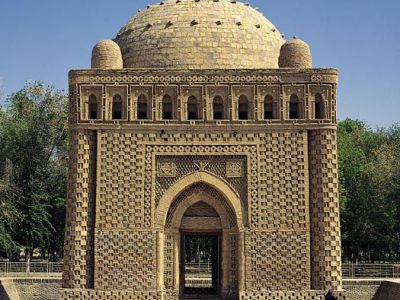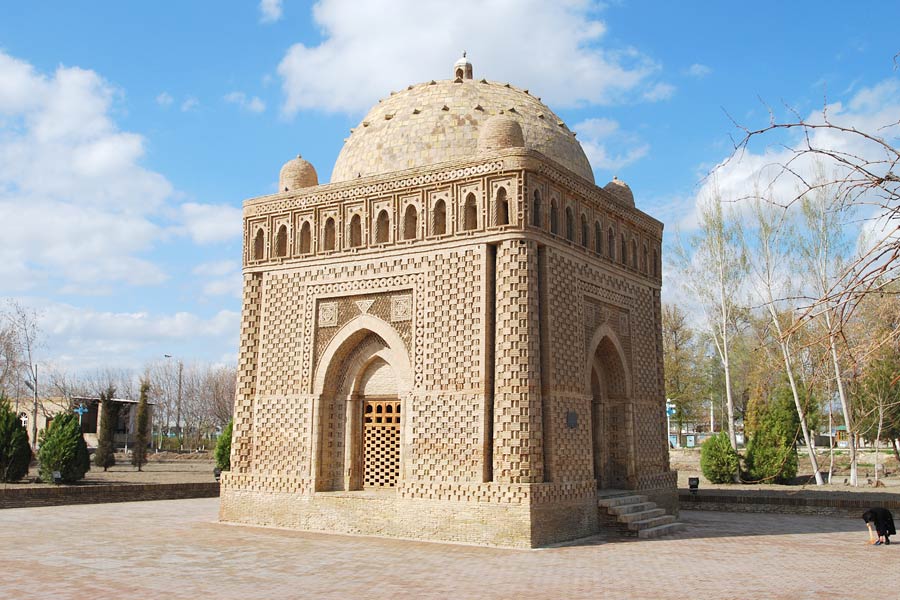Mausoleum of the Samanids was built as a family necropolis between 9th an 10th centuries. We think that Ismail Samani, the founder of the dynasty (died in 907) was buried here as well as his grandson Nasr II ibn Ahmad (died in 943) whose name was read on a wooden board above the entrance. This Bukhara mausoleum was recognized a masterpiece of world architecture for its perfect geometrical form. It is the most ancient of Central Asian brick buildings. The mausoleum is a classic sample of Islamic mausoleum: a cube crowned by a dome. At the same time its decor shows traditions of old Sogdian architecture—archaic columns in corners of octahedron, "pearl chains" along cornice and an upper arch gallery.


